How To Solve Common Issues with RV Ovens: A Comprehensive Guide
Cooking in an RV can be a joy, but dealing with oven issues can quickly turn your culinary adventure into a frustrating ordeal.
Whether you’re struggling with a pilot light that won’t stay lit or food that burns too easily, this comprehensive guide will walk you through solving the most common issues with RV ovens.
Understanding RV Oven Mechanics
RV ovens come in various brands like Dometic, Magic Chef, and Suburban, but they all share similar issues. Before diving into solutions, it’s crucial to understand the basic components of your RV oven:
- Pilot Light: The small flame that ignites the main burner.
- Thermocouple: A safety device that senses the pilot flame and controls gas flow.
- Igniter: The component that sparks the pilot light.
- Gas Valve: Controls the flow of propane to the oven.
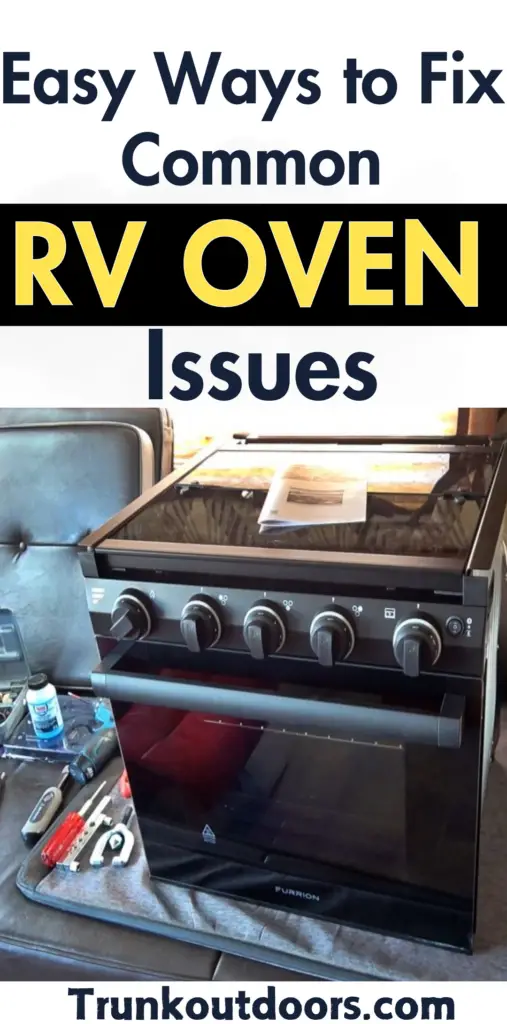
Common RV Oven Issues and Detailed Solutions
1. RV Oven Won’t Light
A dead oven is the first hurdle. Let’s troubleshoot the potential culprits:
a) The Extended Hold:
This is the most common (and often overlooked) fix. Whether you have a piezo igniter (clicking sound) or are manually lighting the pilot, hold the control knob or button down for a full 20-30 seconds.
RV ovens require sustained gas flow to establish a flame, especially in colder weather.
b)Igniter/Pilot Light Inspection:
- Piezo Igniter: Listen for the clicking sound. If absent, check the igniter wire for loose connections or damage. Some igniters use a battery; check if it needs replacement.
- Manual Pilot: Carefully position a long lighter or match near the pilot opening (refer to your oven’s manual for the exact location). Simultaneously press and hold the gas control knob.
c) Fuel System Diagnostics:
- Propane Supply: Verify the main propane tank valve is open. Check the tank level; a low level can cause inconsistent performance. Also, check for any shut-off valves near the oven itself.
- Gas Line Integrity: Inspect the flexible gas line for kinks, bends, or damage. A restricted gas flow can prevent ignition.
- Regulator Check (Advanced): A faulty propane regulator can impact gas pressure. This is usually a job for a qualified RV technician.
d) Pilot Assembly Disassembly and Cleaning (Advanced):
If the pilot light area is clogged with debris (spider webs, dust, etc.), it can hinder ignition.
Caution: This involves working with gas lines. If you’re not comfortable, seek professional help.
Carefully disconnect the gas line (ensure propane is off!), remove the pilot assembly, and clean it with a small brush and compressed air.
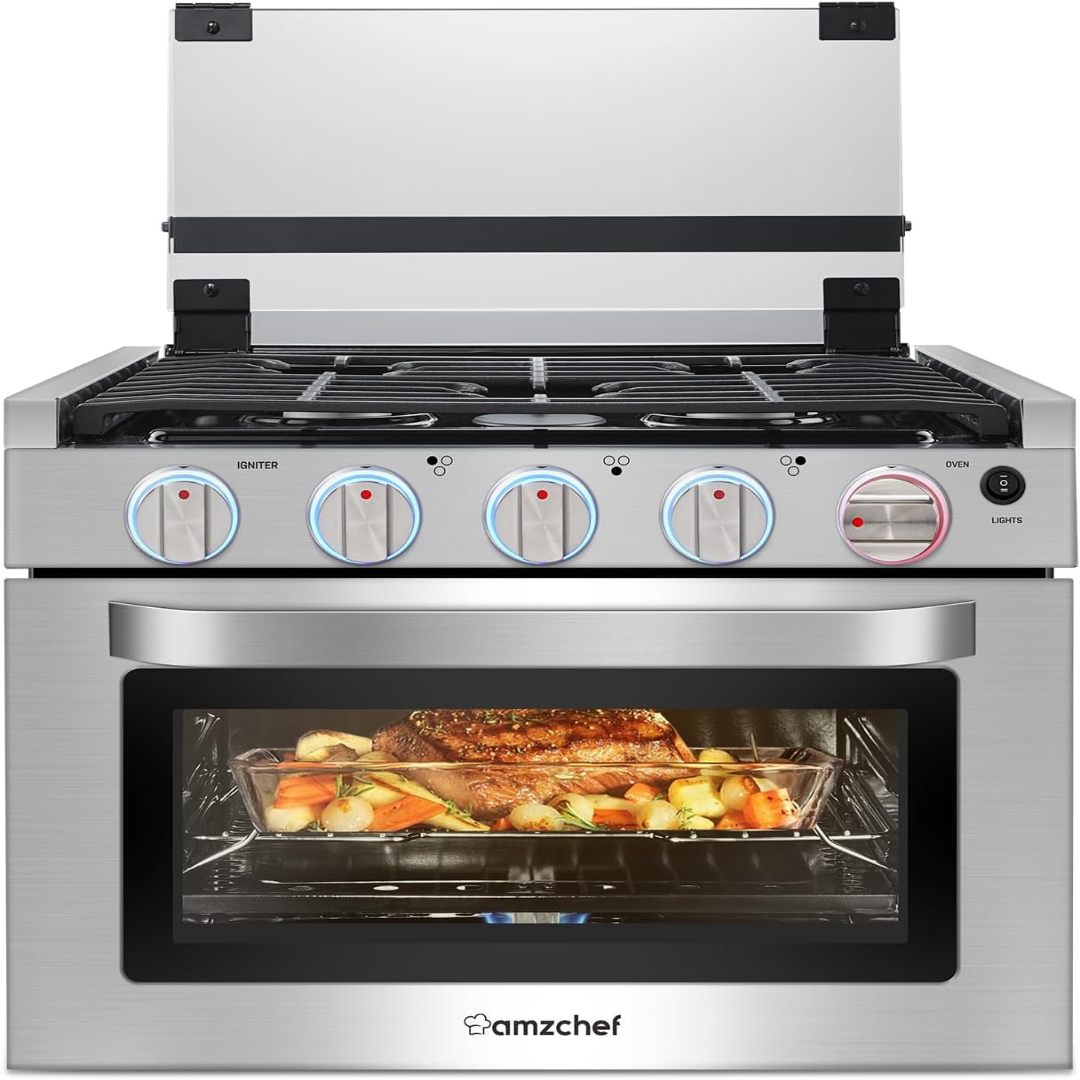
2. Fuel Supply: The Lifeline of Your RV Oven
A seemingly simple oversight – like forgetting to turn on the propane – can be the culprit behind a non-functional oven. Let’s explore the critical aspects of fuel supply:
- The Obvious (But Essential): Propane Tank Valve: It may sound basic, but it’s often the first thing to check. Ensure the main valve on your propane tank is fully open. You wouldn’t be the first RVer to forget this step, especially after a long journey or if it’s been a while since you last used the oven.
- Local Shut-Off Valves: Check for any local gas shut-off valves near the oven itself. These are sometimes installed for safety or maintenance purposes. Make sure they are in the “on” position.
- Propane Tank Level and Gauge Functionality: Even if the tank valve is open, the tank might be low or the gauge might be malfunctioning.
- Tank Level: A low propane level (below ¼ full) can cause insufficient pressure, affecting oven performance. Refill your tank if necessary.
- Gauge Check: Tap the gauge gently to see if the reading changes. Sometimes the gauge needle can get stuck. If you suspect a faulty gauge, consider replacing it. A propane tank gauge is an inexpensive but valuable tool.
- Smell Test (With Caution): When you attempt to light the oven, you should detect a faint propane odor. If you don’t smell gas at all, it strongly suggests a fuel supply problem. However, never rely solely on smell. If you do smell gas strongly, immediately turn off the propane and ventilate the area.
- Kinked Fuel Hose Inspection: A kinked or damaged propane hose can severely restrict gas flow. Carefully inspect the hose running to your oven for any bends, kinks, or signs of wear. If you find any damage, replace the hose immediately. This is a critical safety measure. Accessing the hose might require partially pulling out the oven, but proceed cautiously and consult your RV manual for specific instructions.
- Regulator Check (Advanced): The propane regulator is responsible for maintaining consistent gas pressure. A faulty regulator can cause a variety of issues, including poor oven performance or complete failure. Testing and replacing the regulator is typically best left to a qualified RV technician.
- Appliance Prioritization: Remember that your RV’s propane supply serves multiple appliances – the refrigerator, furnace, water heater, and generator, in addition to the oven. If other propane-powered appliances are also experiencing problems, it further points to a fuel supply issue.
- Leak Test (Advanced, Safety First): If you suspect a gas leak (especially if you smell gas but the oven still won’t light), perform a leak test using soapy water. Mix a solution of soapy water and apply it to gas connections and hoses. Bubbling indicates a leak. Never use a flame to test for leaks. Address any leaks immediately by tightening connections or replacing damaged components. If the leak persists, contact a professional.
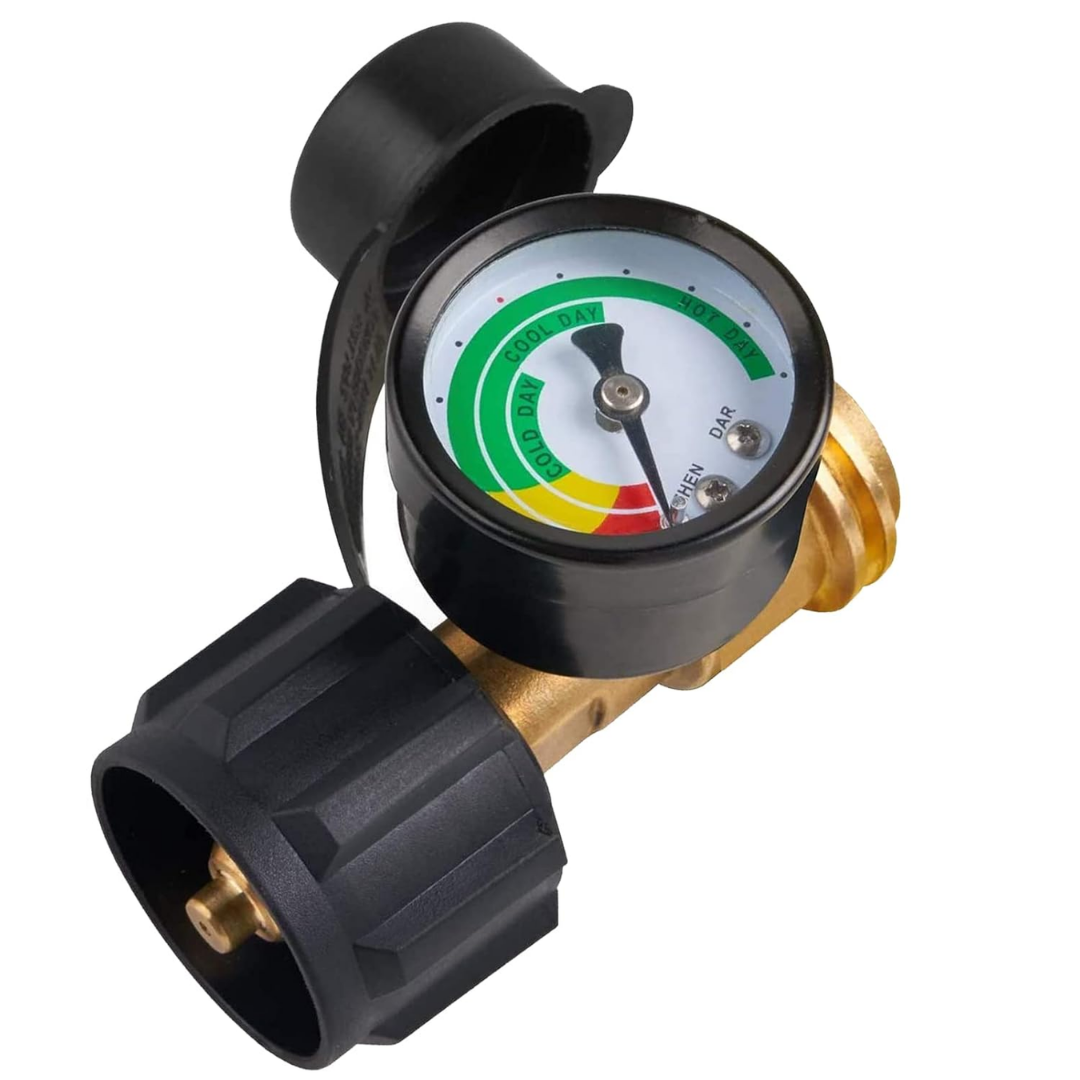
By thoroughly investigating these fuel supply aspects, you can often pinpoint the reason your RV oven isn’t working and take the appropriate steps to resolve the problem.
Remember, working with propane requires caution. If you are ever unsure, it is always best to consult a qualified RV technician.
3. The Pilot Light Won’t Stay Lit
A flickering flame is equally frustrating. Here’s the breakdown:
- Thermocouple Deep Dive:
- Heat Soak: After successfully lighting the pilot, hold the control knob in for a full minute. This allows the thermocouple to generate enough heat to keep the gas valve open.
- Thermocouple Connection: Check for a secure connection between the thermocouple and the gas valve. Clean any corroded contacts with fine-grit sandpaper.
- Thermocouple Placement: Ensure the thermocouple tip is directly in the pilot flame. Adjust its position if necessary.
- Thermocouple Failure: If all else fails, the thermocouple itself may be defective. Replacement is a relatively straightforward repair.
- Drafts: A strong draft can extinguish the pilot light. Try shielding the oven from drafts while troubleshooting.
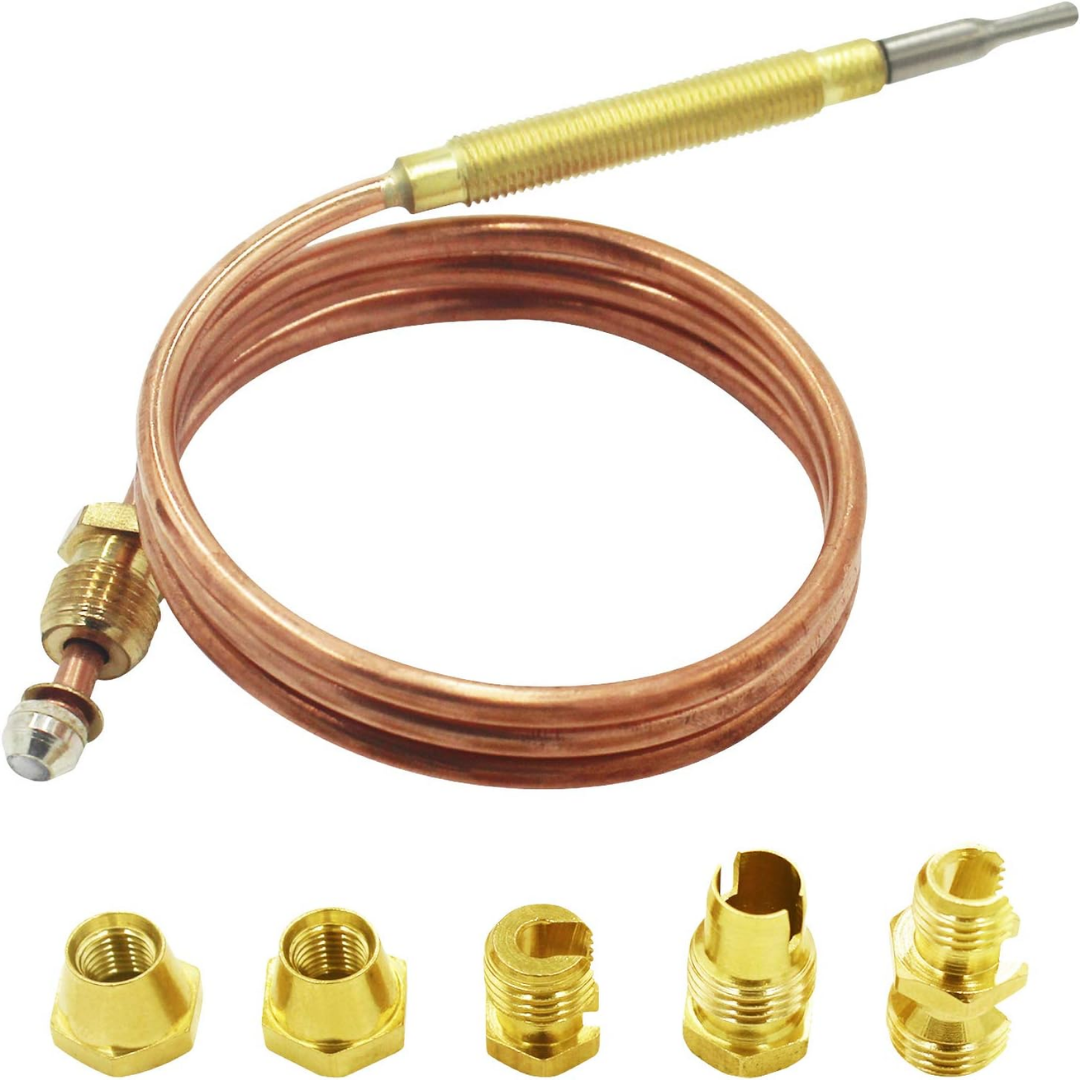
4. RV Oven Burns the Food
Achieving consistent baking in an RV oven requires finesse.
- Leveling and Positioning: Ensure the RV is level for even heat distribution. Use an oven thermometer to verify the actual temperature. Position racks strategically, often using the top rack for baking.
- Cookware Considerations:
- Material: Avoid dark, non-stick pans, which can absorb excessive heat. Opt for lighter-colored metal pans, glass, or ceramic.
- Size: Choose pans that fit comfortably in the oven without overcrowding.
- Heat Distribution Enhancement:
- Baking Stone/Tiles: Place a baking stone or unglazed ceramic tiles on the oven floor to create a more even heat distribution.
- Convection Oven (If Equipped): If your RV oven has a convection setting, utilize it for more uniform cooking.
- Oven Calibration (Advanced): Over time, the oven thermostat may become inaccurate. Consult your oven’s manual for calibration instructions or seek professional assistance.
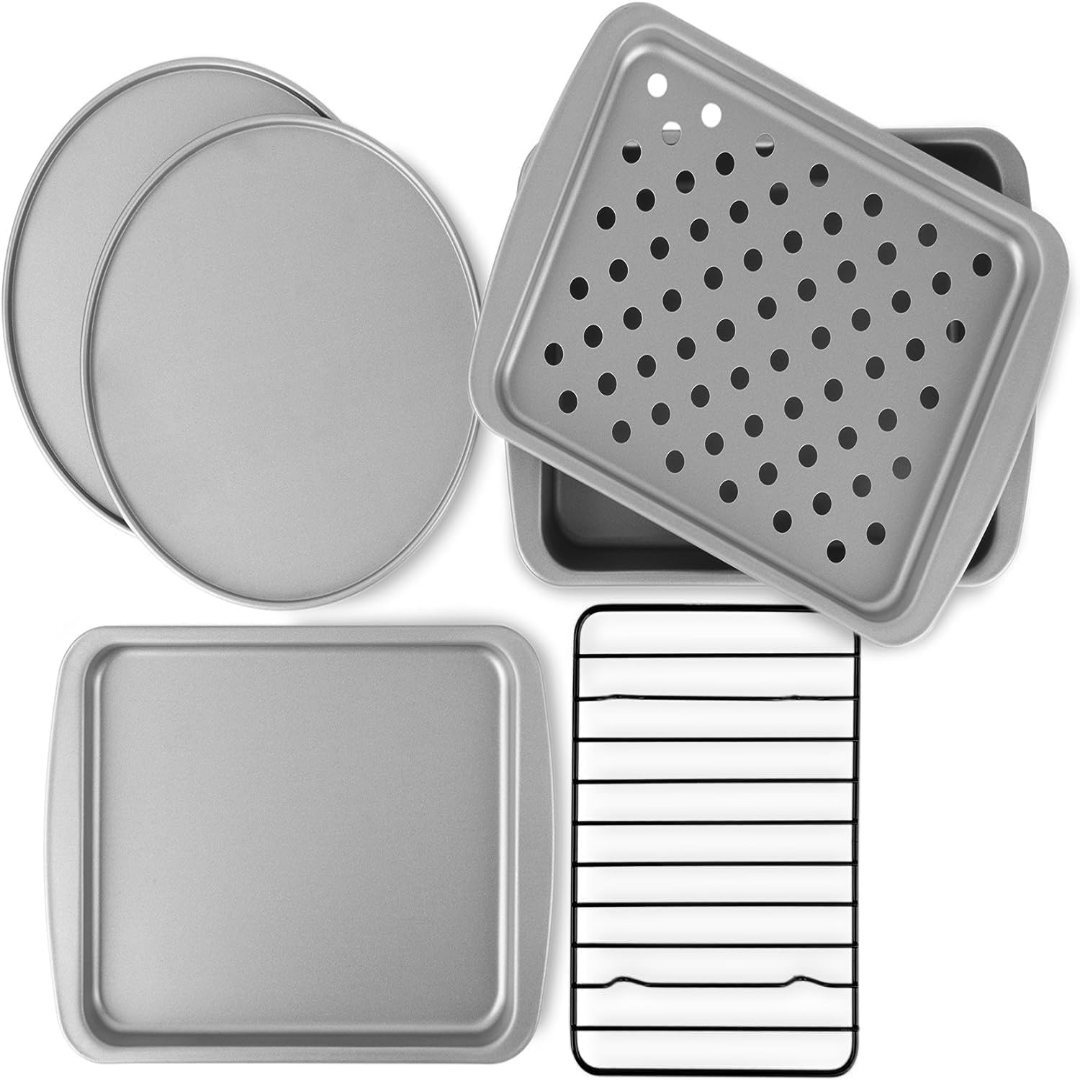
5. Oven Smells Like Gas
A gas smell is a serious safety concern. Immediately turn off the propane supply and ventilate the area.
Do not attempt to light the oven. Contact a qualified RV technician to inspect the gas lines and connections for leaks.
Preventative Maintenance: Keeping Your Oven Happy
- Regular Cleaning: Clean the oven interior regularly to remove food debris and grease buildup.
- Pilot Light Check: Periodically check the pilot light for a strong, steady flame.
- Professional Inspection: Have your RV’s propane system, including the oven, inspected by a qualified technician annually.
Beyond the Basics: Specialized RV Oven Resources
- Manufacturer’s Manual: Your oven’s manual is your best friend. It contains specific instructions, diagrams, and troubleshooting tips.
- RV Forums and Online Communities: Connect with other RVers online to share tips and solutions.
Conclusion
By understanding the mechanics of your RV oven and following these detailed troubleshooting steps, you can conquer common issues and enjoy delicious meals on your RV adventures.
Remember, safety is paramount. If you’re unsure about any repair, consult a qualified RV technician.